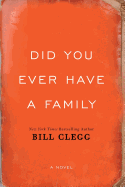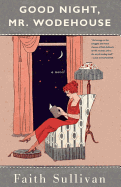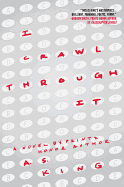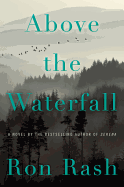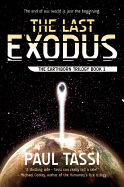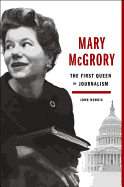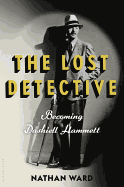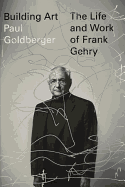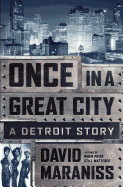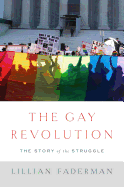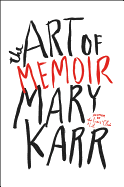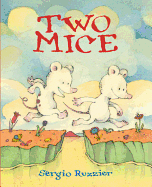Tuesday, September 22, 2015
On a rainy night in September, Seattle chefs and food writers--and a scribble of children's book authors--gathered for an event called "Cultivating Readers" at the Seattle Central Library. Thanks to Governor Jay Inslee's August 7 proclamation, it's Food Literacy Month in Washington State, and First Lady Trudi Inslee is there with the Society of Children's Book Writers and Illustrators and moderator Philip Lee of Readers to Eaters--with a basket of home-grown vegetables--to begin a lively conversation about food and books.
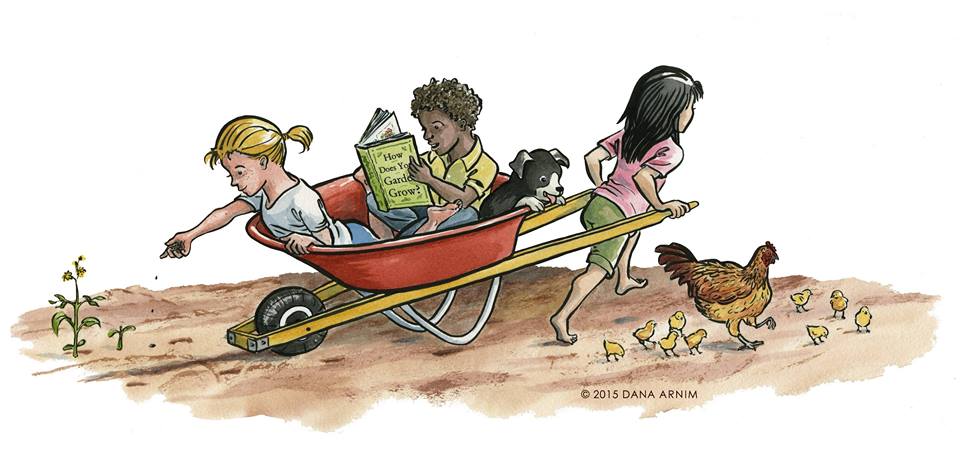 Food critic Rebekah Denn is struck by how many children's books are about food... all that meat-smoking in the Little House books, the Turkish Delight in Narnia. Chef Bridget Charters remembers seeing Mother Goose's "hot cross buns" at a San Francisco bakery, and rushing back to make them from The Joy of Cooking recipe. Chef Tarik Abdullah doesn't remember cookbooks, but does remember how his dad marketed sausage--with a picture of his own face. Kate Lebo (A Commonplace Book of Pie) talks about writing poetry and baking pie: "The difference is, my audience knows what to do with a pie." Edouardo Jordan of Salare Restaurant tells the room that he finally realized why his dad's version of "Little Red Riding Hood"--and all the other stories--was so different from his mom's: he couldn't read.
Food critic Rebekah Denn is struck by how many children's books are about food... all that meat-smoking in the Little House books, the Turkish Delight in Narnia. Chef Bridget Charters remembers seeing Mother Goose's "hot cross buns" at a San Francisco bakery, and rushing back to make them from The Joy of Cooking recipe. Chef Tarik Abdullah doesn't remember cookbooks, but does remember how his dad marketed sausage--with a picture of his own face. Kate Lebo (A Commonplace Book of Pie) talks about writing poetry and baking pie: "The difference is, my audience knows what to do with a pie." Edouardo Jordan of Salare Restaurant tells the room that he finally realized why his dad's version of "Little Red Riding Hood"--and all the other stories--was so different from his mom's: he couldn't read.
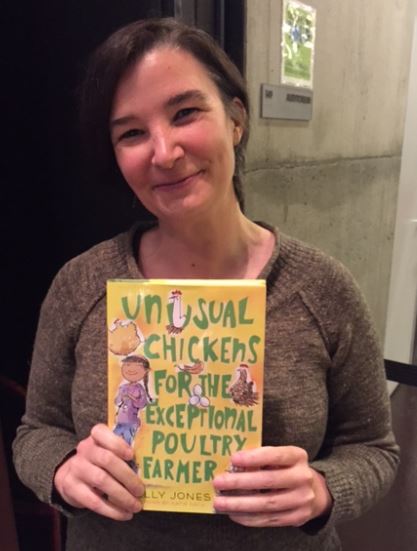 |
|
| Kelly Jones | |
Make way for four passionate children's book authors! Lois Brandt (Maddi's Fridge, Flashlight Press) recounts the day she discovered her friend's refrigerator was empty; Kelly Jones (Unusual Chickens for the Exceptional Poultry Farmer, Knopf) challenges anyone to describe "how an egg happens"; Sara Nickerson (The Secrets of Blueberries, Brothers, Moose & Me, Dutton) evokes the joys of picking fruit, and Katherine Pryor (Zora's Zucchini, Readers to Eaters) has an unapologetic agenda: eat greens.
Educating children about good food is where food literacy starts, and that night, all the right ingredients were on hand. --Karin Snelson, children's editor, Shelf Awareness
Did You Ever Have a Family
by Bill Clegg
Acclaimed memoirist Bill Clegg (Portrait of an Addict as a Young Man; Ninety Days) offers a profound jolt with his first novel, Did You Ever Have a Family.
June Reid's world is splintered and lost in an instant. In the early morning of her daughter's wedding day, her farmhouse explodes and burns, killing June's ex-husband; her current boyfriend, Luke; her daughter, Lolly; and Lolly's fiancé, Will. Did You Ever Have a Family maps the circumstances of the blaze and follows the aftermath of this tragedy as it affects June and other members of the families and communities of the victims.
In Clegg's unusual composition, each chapter belongs to a different person, with the reader left to configure their connections. Some of their stories are told in first person, some in third, and almost all in flashbacks. This ever-shifting perspective highlights mistakes and misunderstandings, including June's; other characters provide small revelations, thereby contributing to larger questions. The relatives and acquaintances of the deceased are joined by others with less clear ties, who appear to the reader in ever-widening concentric circles. Thus Clegg slowly and skillfully reveals the night of the fire and the nuances of the surrounding community in deft disclosures, through different points of view and with deep feelings.
The expansive and surprising result eventually portrays the possibility of recovery, even forgiveness. Did You Ever Have a Family is an elegant first novel, carefully composed and beautifully, hauntingly written. --Julia Jenkins, librarian and blogger at pagesofjulia
Discover: Bill Clegg's debut novel is a wondrous, grave and glorious story of perseverance in the face of unspeakable loss.
Good Night, Mr. Wodehouse
by Faith Sullivan
Faith Sullivan visits Harvester, Minn., for the fifth time in Good Night, Mr. Wodehouse, which tells the story of Nell Stillman. Nell has lived a seemingly quiet life in Harvester: teaching third grade, raising her son alone after her husband's death, caring for friends and neighbors and reading voraciously--especially P.G. Wodehouse. But like so many "ordinary" lives, Nell's story contains hidden depths and rich layers of love, loss and wisdom.
Sullivan (The Cape Ann; Gardenias) begins with Nell's obituary, which Nell herself wrote many years before her death. From there, the story shifts back in time to portray Nell as a young widow, a single mother, a conscientious teacher and a stalwart friend. Her life unfolds alongside many of the 20th century's sweeping changes: electric lighting, World War I, telephones, the Great Depression. Though the outward facts of Nell's life--her apartment above the local butcher shop, her teaching career--remain mostly the same, her inner life is transformed by the novels she reads and loves.
Harvester is full of memorable characters, including the gracious Lundeen family, who take Nell under their collective wing during her early widowhood and remain her lifelong friends. Hilly, Nell's son, is a sensitive and thoughtful young man, and even minor characters like Nell's crotchety Aunt Martha are well drawn. But Nell herself--sensitive, intelligent and warm--is the star of this novel, though she tends to shun the spotlight.
Sullivan's canvas may be small, but her message is universal: books--including this one--have the power to amuse, console and transform lives. --Katie Noah Gibson, blogger at Cakes, Tea and Dreams
Discover: Faith Sullivan's fifth Harvester novel follows the extraordinary life of Nell Stillman, third-grade teacher and lover of literature, who harbors a special affection for P.G. Wodehouse.
Above the Waterfall
by Ron Rash
Ron Rash (Something Rich and Strange) could traverse the timeworn Appalachians in which Above the Waterfall is set with his eyes closed, like Virgil in a cave. The novel returns to terrain both familiar and inexhaustible, where old customs and new come into conflict in ways proven fascinating by his previous works. Here, this fixation on home turf continues to pay off, albeit unevenly so.
Gerald is the soon-to-retire sheriff of a mountain town riddled with methamphetamines and vacationers. Becky is a park ranger with old ties to an eco-terrorist and a school-shooting trauma that still haunts her in adulthood. Within a few chapters, the confluence of greed and tradition comes to a head, and the pair struggles to find the culprit who polluted the stream on a resort property. These moving pieces aren't problematic alone, but together, they overwhelm; compared to the arrow-sharp storylines in Rash's best-known work, this novel feels over-embroidered.
Above the Waterfall is decidedly imperfect, but its most crystalline moments read as though they were divinely written. Its reverent writing about nature evokes the films of Terrence Malick, in which the darkest parts of humanity find their foil in pure, unfettered wilderness. There's plenty of material here to mine both extremes--addicts in trailers; corporate hoteliers playing Monopoly with generations-old farmland; dragonflies alighting so gracefully above an eddy that they almost negate the horrors of the human world. The novel's beauty lies in these respites, restful pauses that let Rash's disturbing revelations about human nature register at a lower frequency. --Linnie Greene, freelance writer
Discover: This Appalachian novel chronicles the rapid changes overtaking a small town, and two people at its center grapple with mankind's penchant for destruction.
Science Fiction & Fantasy
The Last Exodus
by Paul Tassi
"The war was over. And everyone lost."
The Last Exodus starts with this damning statement, setting an initially bleak tone for the first novel in journalist Paul Tassi's post-apocalyptic space trilogy.
Lucas has survived the Xalan invasion that destroyed Earth. The aliens retreated from Earth's nuclear retaliation, but the damage was done. Lucas wanders across the wastelands of the United States, to reach Portland, Ore., where his wife and son lived. After barely escaping a pretty woman's trap to steal his supplies and kill him, he arrives only to find the city a crater. His last hope gone, Lucas slumps to the ground in defeat, at the bottom of the inner basin.
Following a blue light into the crater wall through a series of caverns, Lucas finds a crash-landed yet still functional alien spacecraft, and a Xalan survivor--a rare case since the war--a highly intelligent scientist from an important family on the alien world.
Along with Asha, the woman who ambushed him, a baby boy rescued from a community with a taste for human flesh, and Alpha, the alien, Lucas learns to survive anew as the group fights its way past the cannibals, various automated space defense systems left over from the war and, finally, a Xalan general, genetically altered into a deadly creature with incredible powers and intelligence.
All of this leads them to a new planet, where Lucas and Asha become ambassadors to a galaxy full of beings engaged in a centuries-old war, bent on destroying each other. --Rob LeFebvre, freelance writer and editor
Discover: An intriguing science fiction novel that begins on a bleak post-apocalypse Earth and becomes a space-faring epic of galaxy-spanning warfare and alien beings.
Biography & Memoir
Mary McGrory: The First Queen of Journalism
by John Norris
John Norris's Mary McGrory: The First Queen of Journalism is a well-researched and engaging biography of a fascinating figure, as well as an accessible view of some five decades of U.S. political history.
Mary McGrory had been a book reviewer for the Washington Evening Star for more than a decade when her editor offered her the chance to cover the Army-McCarthy hearings of 1954. Her first political assignment became the beginning of an influential career: she would go on to cover 12 presidential elections, and everything between. Boston Irish Catholic, with a strong impulse to volunteerism and charity, very proper and private in her personal life, Mary happily smoked and drank with the heartiest of her male colleagues. She flirted and made the men carry her bags, but "perhaps more than any other journalist in American history, she pushed her editors (and they were invariably men) to come to terms with the fact that women had something worthwhile to say." Not an impartial journalist, even as she worked to push Bobby Kennedy into the 1968 presidential race, she practically hired Eugene McCarthy's campaign manager herself. She never liked Nixon; dated Jack Kennedy before he was married (or president); was propositioned by Lyndon Johnson. Despite such drama, however, her greatest accomplishments were journalistic, as her exhaustive list of awards indicates.
Even with such absorbing material, Norris (The Disaster Gypsies) earns his reader's respect with careful attention to detail and a precarious but precise balance between his primary, individual subject and the context of U.S. and world history. Mary McGrory is a striking story, meticulously and entertainingly portrayed. --Julia Jenkins, librarian and blogger at pagesofjulia
Discover: A pioneering journalist's compelling life story, evocatively told.
The Lost Detective: Becoming Dashiell Hammett
by Nathan Ward
In 1915, a 20-year-old man, frustrated with one unsatisfactory job after another, answered an ad in a Baltimore newspaper. A company was looking for bright, experienced salesmen--an "excellent opportunity for right man to connect with first-class house." Young Dashiell Hammett soon learned that the ad wasn't for salesmen; it was for private detectives. The job started him on the road to what was to be a successful career as an "op" (or operative) and, later, a hugely successful author of mysteries and detective stories. In The Lost Detective: Becoming Dashiell Hammett, Nathan Ward (Dark Harbor) shows us how Hammett transformed from Pinkerton man to writer.
The company's symbol was an unblinking eye with the motto "We Never Sleep." Hammett loved being a "private eye." He got $21 a week: "I liked gumshoeing... better than anything I had done before." Ward demonstrates how the agency "helped form the writer he became as surely as working at a newspaper might have." Ward's extensive research led him to vast Pinkerton files and the reports ops wrote about their cases. Though Hammett's background is widely known, few primary sources link him directly to the agency, so Ward extrapolates from the simple style and investigative content of the Pinkerton reports to demonstrate how they influenced both Hammett's prose style and subject matter.
Hammett has been quoted as saying "All my characters were based on people I've known personally, or known about." Hardboiled crime novel fans will find Ward's research into what it meant to Hammett to be an actual detective before he wrote about them quite fascinating. --Tom Lavoie, former publisher
Discover: How Dashiell Hammett the detective became Hammett the writer.
Building Art: The Life and Work of Frank Gehry
by Paul Goldberger
Former architecture critic for the New Yorker and the New York Times, a Pulitzer Prize winner, author of a dozen books (Why Architecture Matters; Up from Zero), and four-decade friend and confidant of Frank Gehry, Paul Goldberger is the perfect biographer for the famous Los Angeles architect. A Gehry building, like the iconic Bilbao Guggenheim, is distinctive for its dramatic undulating curves, angles and reflective metal and glass, but the well-illustrated Building Art exemplifies unobtrusive biography at its best. Without flash or controversy, Goldberger chronicles the life of the octogenarian Gehry from his childhood in Toronto as Frank Goldberg, through the move to his lifelong home in Santa Monica, Calif., to his most recent client-architect relationship with wunderkind Mark Zuckerberg as they create the startling new Facebook corporate campus.
Gehry struggled early with anti-Semitism, a difficult father and a demanding first wife (for whom he changed his name), but Goldberger focuses more on Gehry's professional life than his personal trials. Architect, artist, builder--Gehry emerges as a driven, visionary man who nonetheless has an easy-going, self-effacing demeanor ("more Woody Allen than Frank Lloyd Wright") that has helped him win commissions all over the world. While the Guggenheim museum in Bilbao, Spain, catapulted him into the limelight ("as if a novel by David Foster Wallace were to outsell those of John Grisham"), he remains a product of sprawling Los Angeles--a "celebrator of the messy, the incomplete, the cheap, and the raw"--who reflects that "architecture had a responsibility to keep you out of the rain, but it served little purpose if that was all it did." --Bruce Jacobs, founding partner, Watermark Books & Cafe, Wichita, Kan.
Discover: An accomplished biography of a man who is one of the top architects in the world.
History
Once in a Great City: A Detroit Story
by David Maraniss
Once in a Great City, Pulitzer Prize-winning journalist David Maraniss's account of Detroit in the early 1960s, joins his They Marched into Sunlight and Rome 1960 to form what he calls a "sixties trilogy," exploring America's social and political history during that turbulent decade. This addition is a sobering portrait of a city that felt itself to be at the peak of its power and influence in a "time of uncommon possibility and freedom when Detroit created wondrous and lasting things," even as the forces that would topple it had set about their work.
The principal strength of Maraniss's book lies in his skill at marshaling copious research to serve his sophisticated account of a complex, vibrant city balanced on its tipping point. Detroit's economy in those days was propelled by a robust automobile industry that "gave blue-collar workers a way into the middle class" as it churned out full-sized cars while shrugging off early warnings of competition from the compact models of nimbler foreign competitors. Boasting a population approaching 1.7 million in 1960, Detroit soon faced the unintentionally destructive force of urban renewal and demographic realities like white flight, which would propel a population decline to barely 40% of that figure by the time the city filed for bankruptcy in 2013.
Recent developments give some reason to hope that, as it emerges from bankruptcy, a much smaller and humbler Detroit will rebound from the worst of its decline. Sadly, one can't avoid the conclusion that never again will it be the city David Maraniss portrays with empathy and candor in this impressive book. --Harvey Freedenberg, attorney and freelance reviewer
Discover: Journalist David Maraniss offers a vivid portrait of Detroit at the peak of its power and influence in the early 1960s, even as it began decades of decline.
Social Science
The Gay Revolution: The Story of the Struggle
by Lillian Faderman
Lillian Faderman, six-time Lambda Literary Award-winning historian of gay and lesbian history and literature, vividly brings to life the fight for LGBT rights in the United States with The Gay Revolution: The Story of the Struggle. This mammoth undertaking runs more than 800 pages, but it is highly readable, superbly researched and filled with fascinating stories.
While many believe the history of LGBT rights in the United States began with the 1969 Stonewall riots in New York City, Faderman (My Mother's Wars) begins her chronology with Henry Gerber forming the Society for Human Rights in Chicago in 1924. That short-lived organization inspired Harry Hay to create the Mattachine Society for gay men in 1950, and Del Martin and Phyllis Lyon to create its lesbian counterpart, the Daughters of Bilitis, in 1955. Although both organizations were fraught with infighting, power struggles and legal troubles (they were formed at the height of the McCarthy witch-hunt era), they helped members find self-esteem during very repressive times.
Post-Stonewall, Faderman delves into the prickly relationship between lesbians and the homophobic early leadership of the National Organization for Women (NOW); the rise and fall of Anita Bryant and her Save Our Children campaign; the election and assassination of Harvey Milk; and the AIDS pandemic and the creation of ACT-UP, with its savvy media committee. Faderman enlivens the courtroom gains and losses in the new millennium with first-hand testimonies of the backstage drama. This is an essential guide to the gay and lesbian movement, brought to life by a meticulous historian who is also a natural storyteller. --Kevin Howell, independent reviewer and marketing consultant
Discover: The fascinating people and their heroic actions behind decades' worth of gradual change in the fight for LGBT civil rights in the United States.
Essays & Criticism
The Art of Memoir
by Mary Karr
Mary Karr is eminently qualified to write The Art of the Memoir. Not only has she written three magnificent books in the genre--The Liar's Club, Cherry and Lit--but she's also someone who has "cherished the form as long and as hard as anybody," having taught a class in memoir for years at Syracuse University. Karr combines these strengths to create a book that discusses what a memoir is, which writers did it really well and how those interested in writing one might go about doing so.
The Art of Memoir is snappy and witty, humorous just when it needs to be, yet plainspoken in the best way. "[W]riting a memoir is knocking yourself out with your own fist, if it's done right... there's suffering involved." To do so, one must find The Story (yours and no one else's) and be willing to tell it in the "truest, most beautiful way." Karr hopes to "give you the scuba fins and a face mask and more oxygen for your travels" through what she calls "the watery element of memory."
From these shining illustrations of the craft at its best, The Art of Memoir gathers tools for the aspiring writer, but Karr says that doubt may be the memoirist's greatest asset or, at the very least, a penchant for rethinking one's assumptions about the past. Moreover, she takes heart in G.H. Hardy's A Mathematician's Apology, her favorite memoir; every time she reads it, the book showers her with "sparkles like a Disney fairy." The Art of Memoir too sparkles, and teaches, and enthralls. --Tom Lavoie, former publisher
Discover: Esteemed memoirist Mary Karr expounds on the genre's greatest books and offers wise counsel for writing one.
Children's & Young Adult
I Crawl Through It
by A.S. King
Deftly juggling a handful of surrealistic elements, Printz Honor author A.S. King (Please Ignore Vera Dietz) crafts a wholly original work of fiction that is as bizarre as it is satisfying.
Seventeen-year-old Stanzi won't take off her white lab coat and dissects frogs with a clinical passion that distracts her from the family tragedy her parents drink to forget. She's in love with Gustav, who is building a red helicopter that's not technically invisible, but Stanzi can see it only on Tuesdays. China, Stanzi's best friend, has literally turned inside out, ever since her nasty encounter with a boy who wouldn't take no for an answer: "She just turns herself over and over, esophagus to rectum, like a human Lava Lamp." And pathological liar Lansdale Cruise "is like Pinocchio except her hair grows, not her nose." Add in a dangerous man in a bush who trades handmade alphabet letters for kisses, daily bomb scares at the high school and the pervasive pressure of standardized testing, and the carefully crafted plot still makes sense.
The poetic, playful and poignant story weaves together the points of view of myriad characters who are all dealing with trauma, and all looking for love and redemption. Each copes with stress, violence, turmoil and the dysfunctional adults in their lives by taking extraordinary self-protective measures. Ultimately, it is only when they are ready to face their demons head-on that true healing begins. --Lynn Becker, host of Book Talk, the monthly online discussion of children's books for the Society of Children's Book Writers & Illustrators
Discover: Master of contemporary surrealistic fiction A.S. King's fresh YA novel is about heartbreak, healing and possibly invisible helicopters.
Two Mice
by Sergio Ruzzier
Two Mice by Sergio Ruzzier (A Letter for Leo) is a storybook--masquerading as a counting book--that proves sometimes two is just the right number for one adventure.
This appealingly small book counts only up to three and then back down to one, but counting is just part of the fun. It's also a cleverly unfolding, happy-ending story of mouse mishaps. The design is simply ingenious: even before the title page, readers see "One house" accompanied by a picturesque house, in soft lines awash in cheerful watercolors. The title-page spread reads "TWO MICE," which is the book's title and the plain fact: we see two white, pink-nosed mice, one with distinguishing brown spots, each with a little iron bed in a colorful tile-floored room. One more page turn leads to "Three cookies": there are two cookies in front of one giddy, cookie-gobbling mouse, and only one in front of the understandably disgruntled mouse. The mice transcend the injustice, and are soon off on a boating junket. But in a "Three boats/Two oars" scenario, there can only be "One rower." Then, readers learn the hard lesson that sometimes it takes only three rocks to put two holes in a boat, causing one shipwreck. The unlucky duo nearly become eagle food, but preschoolers need not panic... sometimes two mice just need one escape. Three cheers! In the happy ending, the two mice are safely home, making one soup.
The inventively undulating narrative structure, the sherbet-like color palette, fantastic tile floors, countless tiny visual surprises--and last but not least, the comfortingly resilient mouse friendship--make Two Mice a standout. --Karin Snelson, children's editor, Shelf Awareness
Discover: Sergio Ruzzier's small storybook/counting book cleverly tells the tale of two mice and a number of narrow escapes.


